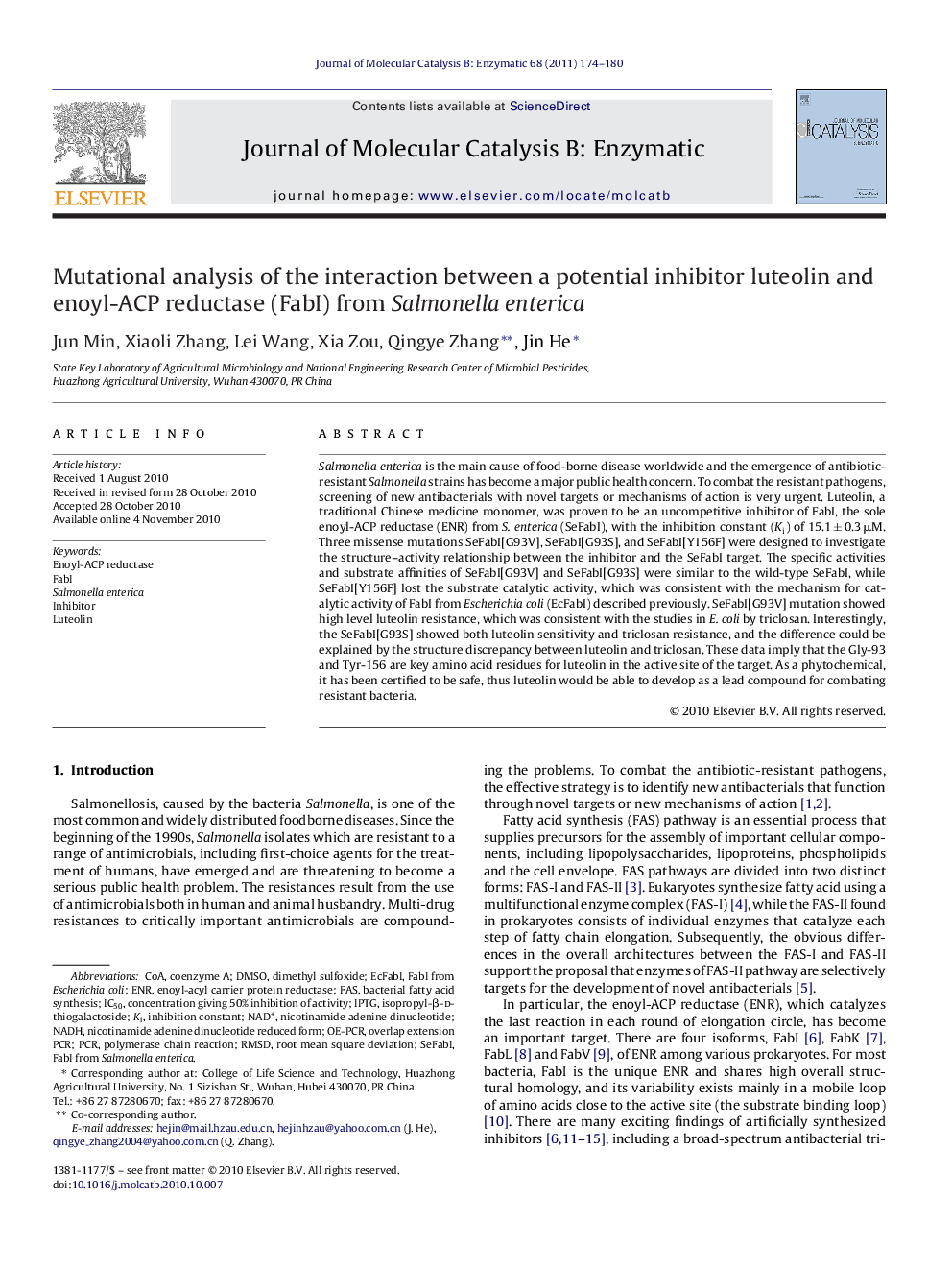| کد مقاله | کد نشریه | سال انتشار | مقاله انگلیسی | نسخه تمام متن |
|---|---|---|---|---|
| 70739 | 48844 | 2011 | 7 صفحه PDF | دانلود رایگان |

Salmonella enterica is the main cause of food-borne disease worldwide and the emergence of antibiotic-resistant Salmonella strains has become a major public health concern. To combat the resistant pathogens, screening of new antibacterials with novel targets or mechanisms of action is very urgent. Luteolin, a traditional Chinese medicine monomer, was proven to be an uncompetitive inhibitor of FabI, the sole enoyl-ACP reductase (ENR) from S. enterica (SeFabI), with the inhibition constant (Ki) of 15.1 ± 0.3 μM. Three missense mutations SeFabI[G93V], SeFabI[G93S], and SeFabI[Y156F] were designed to investigate the structure–activity relationship between the inhibitor and the SeFabI target. The specific activities and substrate affinities of SeFabI[G93V] and SeFabI[G93S] were similar to the wild-type SeFabI, while SeFabI[Y156F] lost the substrate catalytic activity, which was consistent with the mechanism for catalytic activity of FabI from Escherichia coli (EcFabI) described previously. SeFabI[G93V] mutation showed high level luteolin resistance, which was consistent with the studies in E. coli by triclosan. Interestingly, the SeFabI[G93S] showed both luteolin sensitivity and triclosan resistance, and the difference could be explained by the structure discrepancy between luteolin and triclosan. These data imply that the Gly-93 and Tyr-156 are key amino acid residues for luteolin in the active site of the target. As a phytochemical, it has been certified to be safe, thus luteolin would be able to develop as a lead compound for combating resistant bacteria.
Figure optionsDownload as PowerPoint slideResearch highlights▶ Luteolin was an uncompetitive inhibitor of SeFabI with the Ki of 15.1 ± 0.3 μM. ▶ SeFabI[Y156F] lost the substrate catalytic activity. ▶ The Gly-93 was a key site for luteolin binding to the active site of SeFabI. ▶ The FlexX docking was effectual to analyze interaction between ligand and SeFabI.
Journal: Journal of Molecular Catalysis B: Enzymatic - Volume 68, Issue 2, February 2011, Pages 174–180